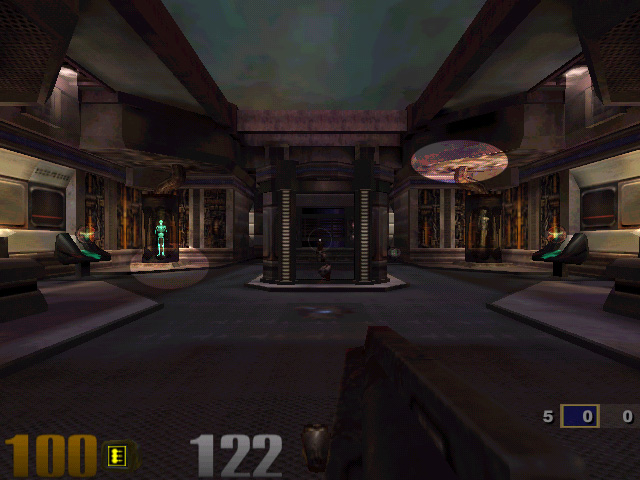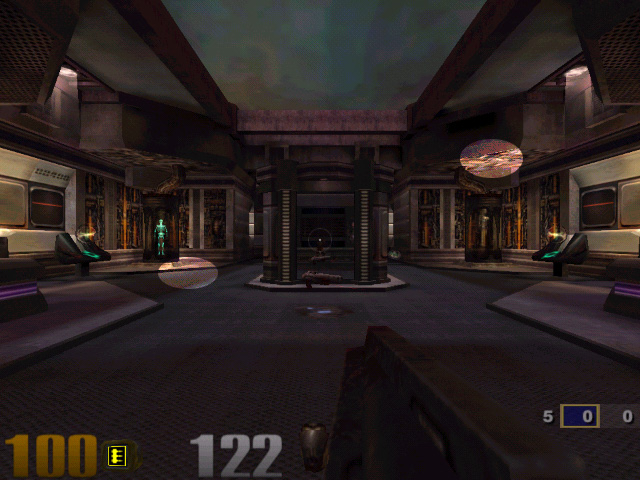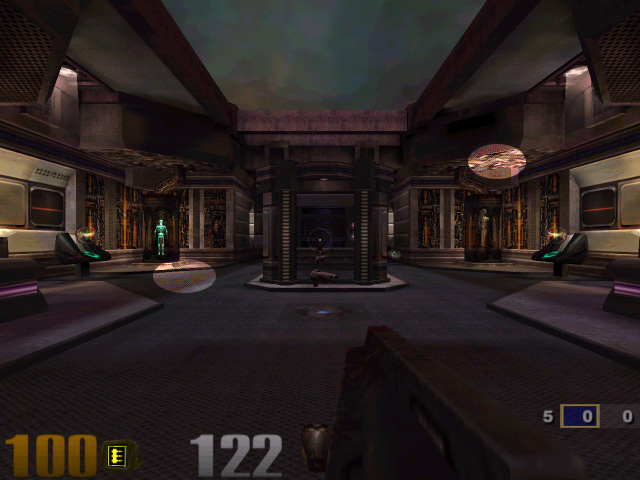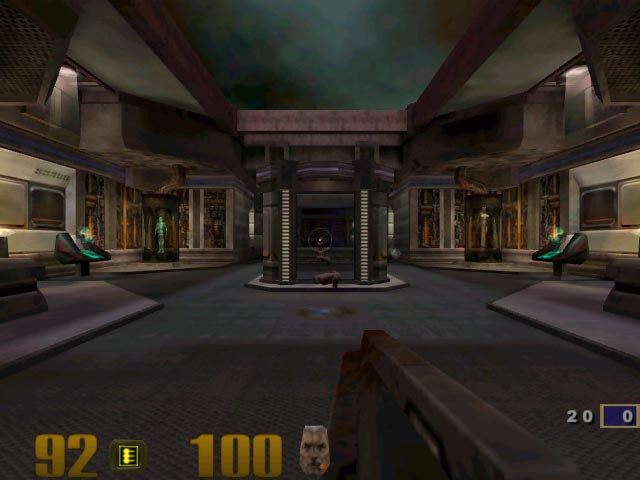NVIDIA GeForce 2 GTS FSAA Update (Detonator 5.30 Drivers)
by Anand Lal Shimpi on July 7, 2000 12:00 PM EST- Posted in
- GPUs
FSAA Image Quality in OpenGL
The most important metric with which to gauge FSAA "performance" is with the resulting image quality. For that, let's head to the screen shots.
All screenshots were taken using Hypersnap-DX available at http://www.hyperionics.com
We've highlighted the key points to look for, but in order for you to see the true difference in the images you'll want to download the uncompressed Targa files which are about 900KB in size.
FSAA Disabled - GeForce2 GTS

FSAA Setting 0 (lowest quality) - GeForce2 GTS

FSAA Setting 1 - GeForce2 GTS

FSAA Setting 2 (highest quality) - GeForce2 GTS

We couldn't really tell that much of a difference between the three FSAA settings, especially under Quake III Arena, however there was a clear difference between turning FSAA on and leaving it off. For comparison we've provided the same shots on a Voodoo5 5500. The shots appear to look more "washed out" than the NVIDIA shots because 3dfx has yet to include MIPMap LOD (level of detail) settings in their drivers that would help to improve the image quality in situations such as the one below.
2 Sample FSAA - Voodoo5 5500

4 Sample FSAA - Voodoo5 5500

While looking a bit more washed out than the GeForce2 GTS (because of the aforementioned lack of any MIPMap LOD slider in the drivers), the Voodoo5 does seem to have an advantage when it comes to FSAA but it is just a slight one under OpenGL. One could argue that at the middle and highest quality settings (1 & 2), the GeForce2 GTS looks just as good as the Voodoo5 5500 with FSAA enabled.
Unfortunately FSAA in OpenGL doesn't matter nearly as much as FSAA in Direct3D which we will get to shortly.
GeForce2 GTS
@ 640 x 480 - No
FSAA - FSAA
Setting 0 - FSAA
Setting 1 - FSAA
Setting 2
3dfx Voodoo5 5500 @ 640 x 480 - No
FSAA - 2X
FSAA - 4X
FSAA










0 Comments
View All Comments